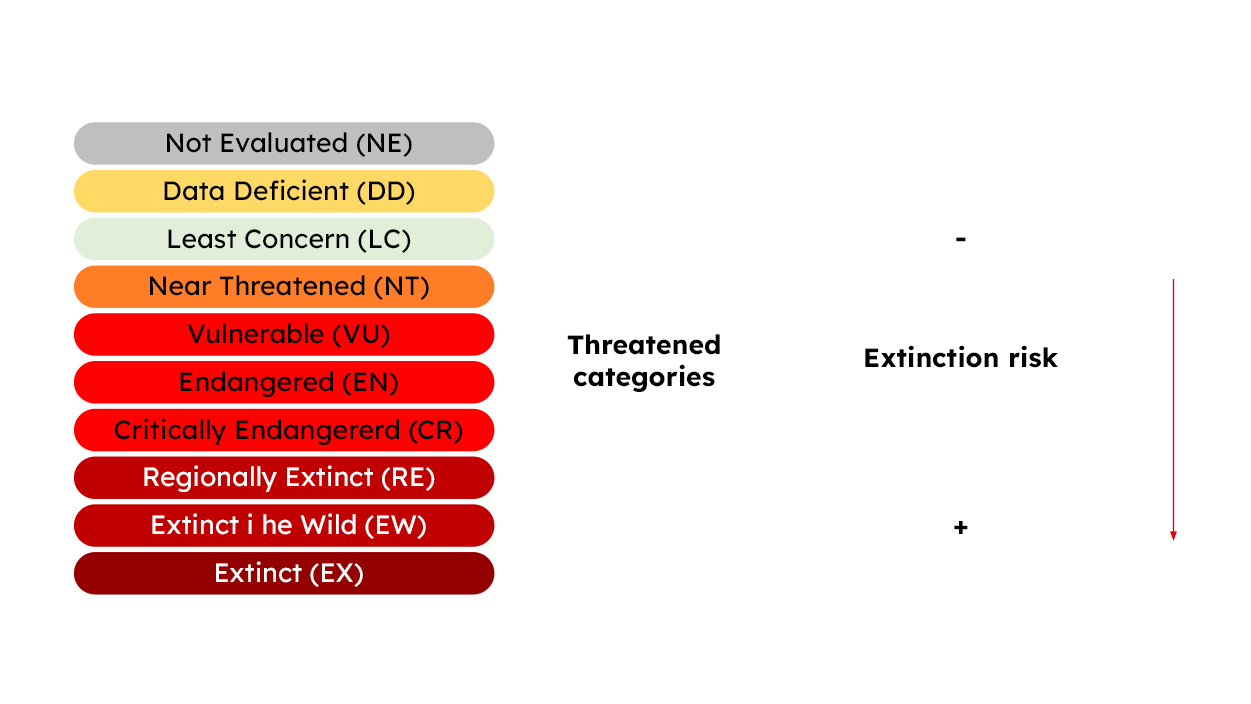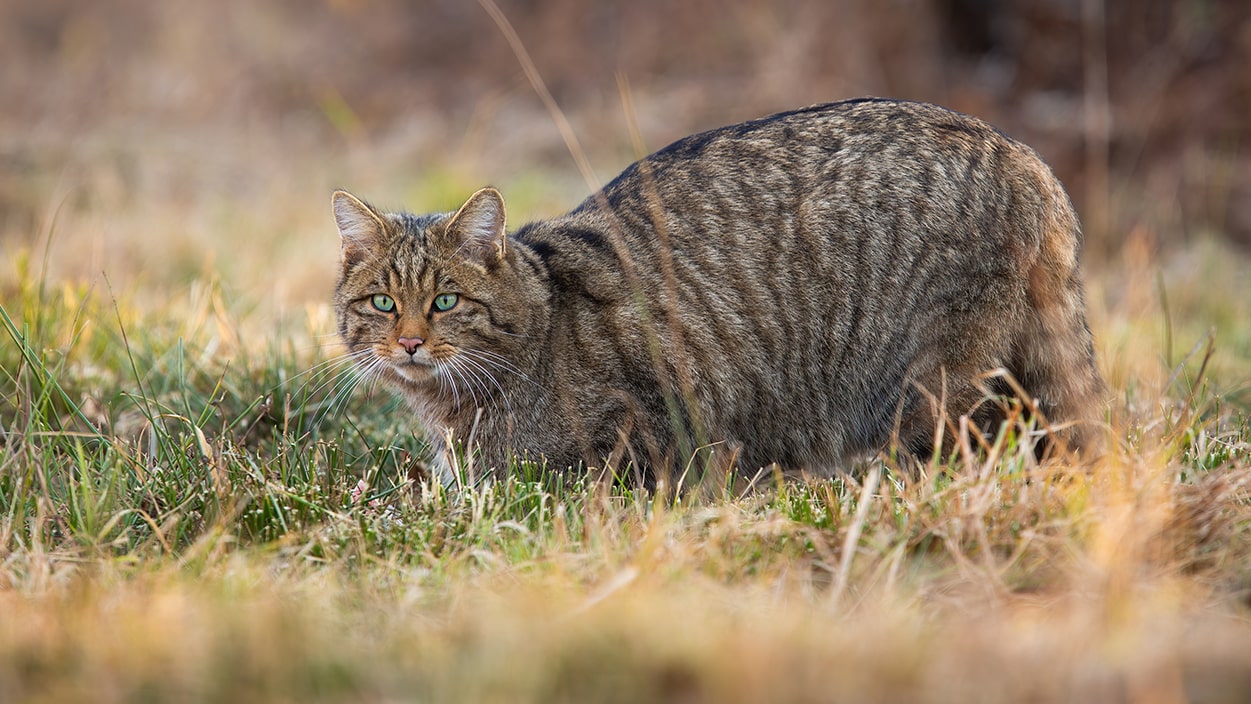When the species observed have sizeable populations and are present over large areas of their native territory, they do not fit into any of the previous categories. Depending on the evidence, the species can be considered as:
- Near Threatened (NT): during the period in which it was observed, the species is not threatened, but there is information and evidence that it may, in the near future, deteriorate and become part of one of the threat categories.
- Least Concern (LC): is assigned to species whose populations and range are large and stable or growing, so the species does not raise any concerns about the risk of extinction. Examples in the animal world include: the European hedgehog (Erinaceus europaeus) or the common mole (Talpa europaea), listed both in the (previous) Red Book and by the IUCN.
Designations are also given to species considered extinct:
- Extinct (EX): a species is considered extinct when there is no reasonable doubt about the death of its last remaining specimen. The category is assigned after all exhaustive attempts to find a specimen of a species in its known and potential habitats (throughout its historical range) have failed. This means that the surveys were carried out over a period of time appropriate to the life cycle and biological form of the species in question.
Similarly, the category “Regionally Extinct” (RE) can be attributed when there is no doubt that in a given region the final remaining specimen of the species has died, although there are populations in other regions where it is native. One example is the brown bear (Ursus arctos) which, despite being considered “Regionally Extinct” in more than 20 countries where it naturally existed, has stable populations in vast expanses of the planet, so it has been globally classified on the IUCN Red List as a “Low Concern” (LC) species that is not at risk of extinction.
- Extinct in the Wild (EW): This is the category assigned to species that only exist in captivity, as a result of cultivation or with one or more naturalised populations outside their natural range. This category is also assigned after exhaustive studies have been conducted without identifying at least one specimen in the wild.
It should be noted that species lacking adequate and/or sufficient information to be directly or indirectly evaluated as to their risk of extinction are also identified with the classification “Data Deficient” (DD), and that additional relevant information is required for further evaluation. Examples of animals for which insufficient information is available are the stoat (Mustela erminea), the pine marten (Martes martes), and the common polecat (Mustela putorius). Similarly, species that have not yet been subject to the assessment criteria may be identified as “Not Evaluated” (NE).






